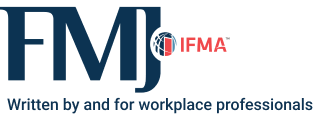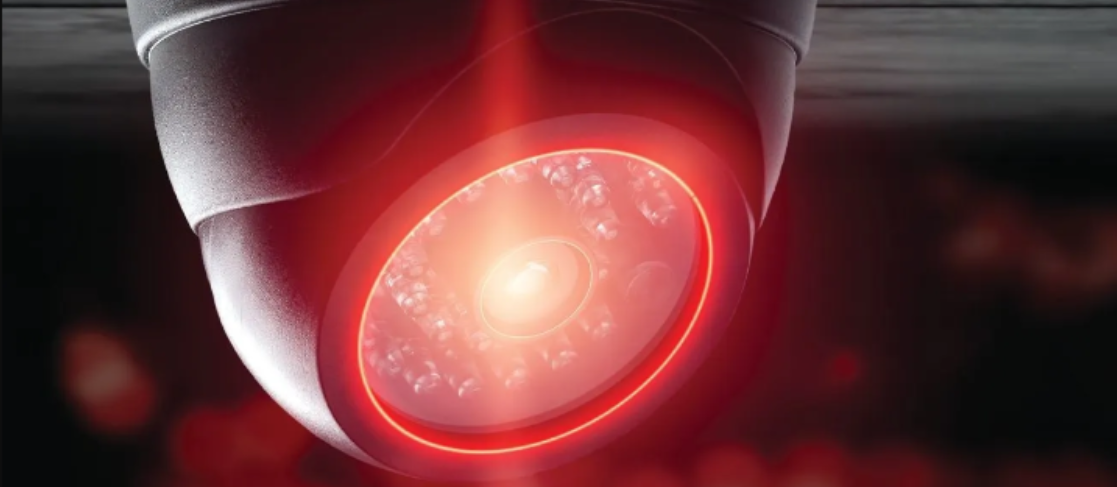Approaching IAQ
The maintenance perspective

Building occupants are increasingly focused on indoor air quality (IAQ) management and their level of safety as their return to indoor spaces. As facility management teams are tasked with demonstrating safe, adequate measures and solutions are in place, they are identifying where and how to adjust their building processes and procedures to accommodate new expectations for IAQ. With greater awareness of indoor health risks, returning to buildings must include a level of confidence that these spaces are safe for occupancy.
A worker's health is critical to well-being, morale and overall performance. To have a safe and healthy workplace, many facilities will require changes and upgrades. What efforts will be necessary? FMs should focus on several solutions and considerations regarding new expectations for indoor air quality (IAQ).
Daily process checks
Walking into a building and smelling damp or otherwise unpleasant smells is cause for concern. At that point, how can an organization confirm the air quality in the building is safe? What should be done to maintain a safe building? There are some basic air quality prevention checks and instruments to utilize to maintain a safe workspace and limit the transfer of mold spores and other contaminants.
Daily process checks (also known as rounds) are routine inspections of the air management systems ensuring all equipment is operating as intended and noting any adjustments that may be needed. Daily process checks should include observations of zone evaluations, equipment inspections and follow-up on observations.
Zone evaluations
It is important to walk different areas of the facility. A typical route check should be walkable in about an hour or longer depending on the size of the facility. Early morning routes ensure adequate heating of the areas, while mid-afternoon routes allow for proper cooling, especially for south-facing and areas with large windows. While walking, consider hot or cold zones or drafts that could indicate inadequate circulation or a component failure such as a damper stuck open or closed. Condensation around air vents or water stains on ceiling tiles suggests inadequate humidity control or a coil leak.
Listen for unexpected noises such as belts squeaking or excessive vibration. Something as simple as a rubber smell could indicate a slipping belt. A low-frequency vibration should be indicative of air balance concerns.
When walking around the building, check for air differentials between the office area and compartmental equipment room. If a significant pressure differential exists, the unit is probably overdriven. This could be due to cooling demand or other issues and will need to be investigated.
Equipment inspections
When inspecting the equipment, look for water leaks and condensate accumulation. Visually observe the drip pans to make sure they are not backing up. The pans should be in good working order with no drain occlusions or mold development. Condensate may be present in warmer climates, but ensure the moisture is not from coil leaks.
Pollutant sources impacting IAQ management
IAQ is impacted by three specific categories of contamination: biological, chemical and particles. Improving the ventilation and building care can assist in preventing IAQ problems. The goal of IAQ management should be to reduce the impact and exposure of these contaminants.
-
Biological contaminants refer to bacteria, viruses, fungi, pollen, humidity and similar. These pollutants cause most allergic responses in occupants.
-
Chemical contaminants could include off gassing of new carpet or furniture, cleaning products or chemicals. This could also include combustion gases being present, such as carbon monoxide (think natural gas powered in-line heating units).
-
Particles are substances that are capable of being projected into the air. Many particles are too small to be visible, but still present. New or ongoing construction could increase dust particles. There can also be particle dispersion for normal activities like copy machines, cooling fans, etc.
IAQ testing
While airborne particles are a concern, there is also a significant concern for mold growth. As building occupancy increases, energy reduction measures should be implemented to reduce air exchange and conditioning in the unoccupied spaces. As a result, concern for mold has increased, due to indoor sweating, inadequate humidity control and air exchange reductions.
An obvious indicator of concern would be damp or wet smells observed in the facility. This would suggest the potential for mold spore growth existing. In these cases, confidence in the air quality and building safety should be a concern and indoor air quality testing should be conducted.
The most common method of IAQ testing is to do swab testing of areas suspected of mold development. This includes cooling coils, valve dampers, vent grills, etc. If the condition exists for the development of viable mold spores, one should be aware that these spores can travel through the air transfer system to affect other locations. As such, detection of mold should warrant more comprehensive evaluations and a program to ensure the building system is acceptable.
When mold is discovered, remediation plans must be developed and implemented. Some solutions may include a comprehensive disinfecting program. Many office buildings can benefit from technology for vent cleaning, aerosol disinfecting solutions and treatment programs to assist in their remediation efforts.
IAQ monitoring
After remediation has been deemed successful, air sampling and monitoring should be established to maintain a safe environment. Air sampling solutions and air quality dashboards are available from multiple vendors. These can be installed at facilities in view of occupants to instill confidence and provide a monitoring solution for maintaining IAQ.
In-duct air sampling units are available that can be installed in return air ducts near the air handling system for sampling levels of humidity and CO2. Additionally, building location sensors can be installed to detect occupancy levels and foot traffic. These can be used to adjust airflow and turnover based on occupancy levels.
Indoor air sampling units with cartridge type-sampling components can collect air samples and can be analyzed for the presence of viruses.
Most devices accessible today can connect to the cloud via the building's IP network or, in specific circumstances, a proprietary hotspot. These all send data to the cloud and typically require a subscription service and the vendor application software for viewing. Some systems can also use BACNet or Modbus (common communication protocols for building automation) to communicate with building automation systems (BAS).
A variety of solutions should be investigated to best suit the facility dynamics, occupancy levels and support staff. These monitoring options can be used to enhance the fundamental components of good air quality and should be part of the comprehensive facility management program.
Maintenance frequency & additional job steps to consider
With an increased expectation for IAQ, more frequent verification of HVAC system performance may be necessary. If continuous monitoring systems are not in place, the frequency of basic operational checks should be increased.
When reviewing the maintenance plan for the HAVC equipment, be sure that job steps include addressing components affecting the air quality. Some examples include:
-
Ducting and enclosure corrosion typically indicates a source of dampness and potential for entry. Contaminants may enter the system downstream of the filtration. Also, check for missing screws and weather-stripping. Latches and doors should fit securely. Compartments should be kept clean; vacuum out as needed to reduce particulates being picked up and circulated.
-
Operational checks should be conducted for excessive vibration. Increased filter resistance affects air balance and could produce harmonic vibrations across the system.
-
Coils condition for cleanliness to reduce resistance and increase the conductivity and efficiency. Coil cleaning should include brushing, blowing, vacuuming and in some cases, pressure washing. Be sure to use only approved cleaners; incorrect cleaners can contribute to chemical contamination of circulating air. Coil leaks will contribute to moisture in the system as well as energy and water loss.
-
Humidifier coils should be in good order with no mold growth. Steam coils and spray nozzles should be cleaned and inspected. Any corrosion should be investigated and remediated.
-
Fans can accumulate debris. There are typically multiple fans in a system (supply, return, booster, make-up air, active valve boxes, etc.). Debris on the fan blades should be removed periodically.
-
Condensate pans and catch basins should be clean with properly functioning drain lines. Disinfecting tablets or blocks should be present to eliminate mold spore development.
-
If UV lights are installed, check the bulbs for proper output and operation. Ideally, UV lights are installed near the coils where most moisture accumulates but may also be installed in the duct chambers. Remember to wear proper eye protection and take appropriate precautions.
Disinfecting the air before circulation
Air disinfection can be achieved using UV-C or similar disinfecting chambers inside the air ducts where passing air gets sanitized. This often requires an upgrade or modification to the ductwork near the output of the air system, ensuring the air being distributed is disinfected. UV-C solutions can be mounted to high ceilings where line-of-sight is managed for the occupants. This can be a minimally invasive solution for larger areas.
Conclusion
IAQ solutions should be sustainable and based on the building occupancy needs. Occupied building air systems needs to be able to provide the IAQ that occupants expect. FM teams must meet today’s essential air quality standards and regulations as organizations increase building occupancy. Organizations and FMs should continue to educate themselves on the latest technology available and anticipate future occupancy needs.

David Auton, senior director of engineering and maintenance, is on the C&W Services' Service Innovations & Optimization Team (SIOT). He has managed data analytic challenges, resolved systemic issues, worked through complex operations, and utilized Six Sigma DMAIC and reliability centered maintenance programs to improve facilities in his last five years with C&W Services. He has more than 30 years of facility services experience and has a thorough understanding of account management, stable control programs and resources to help clients achieve their goals. Auton is a Facility Management Professional™ (FMP®) and a member of the Society for Maintenance and Reliability Professionals (SMRP).










